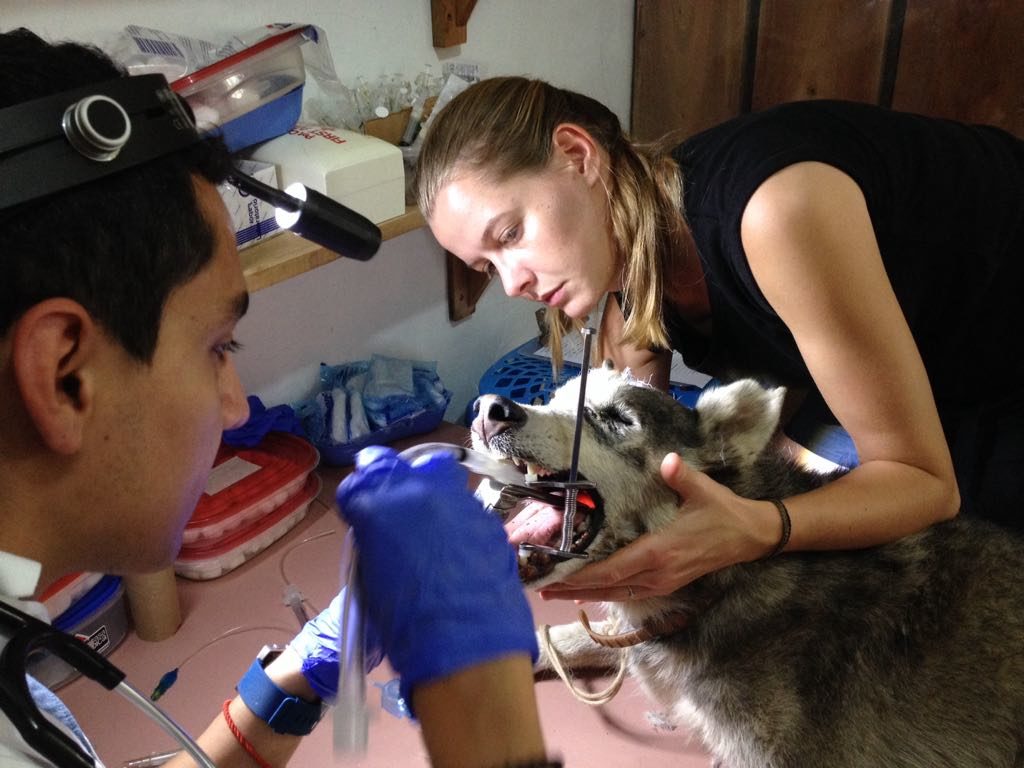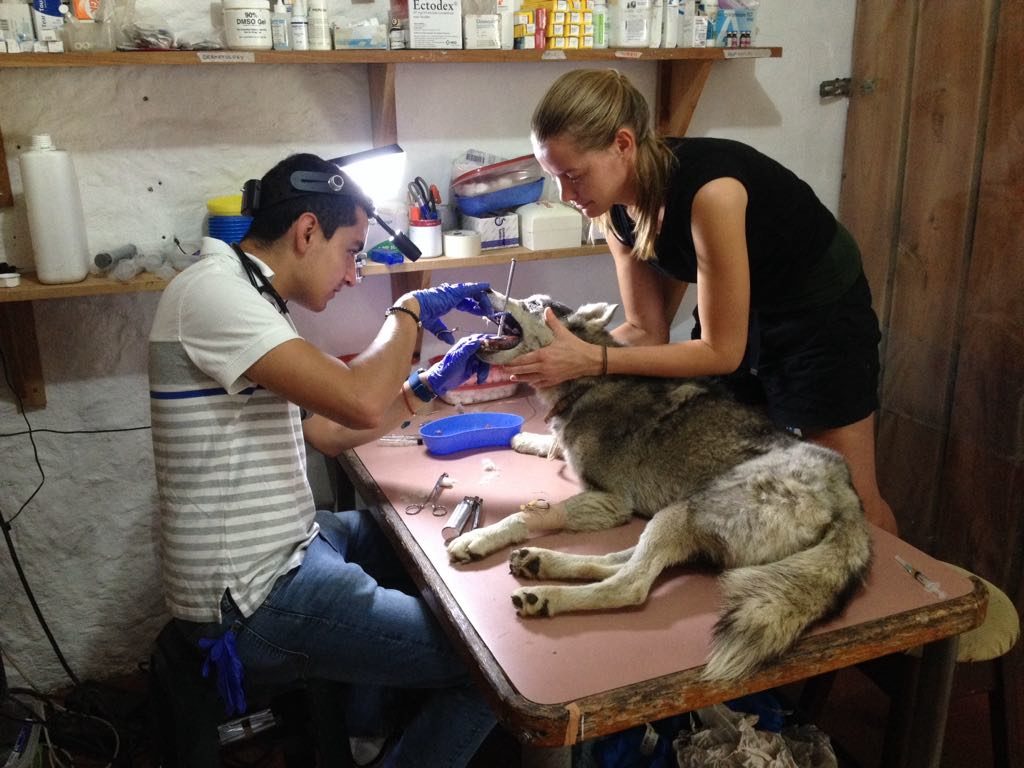Muñeco
Santa Cruz, Galapagos
Just as the Galapagos team had finished up for the morning and were heading out for their lunch break, an emergency arrived at the gates. Muñeco, a three year old Husky, had been chewing on a bone; one that was small enough that he had tried to swallow it. The bone was now lodged in his throat, blocking his airway and giving him trouble breathing. The bone had also begun to aggravate Muñeco’s throat, and the team could see blood seeping out of his mouth. Poor Muñeco needed help immediately.
The team put the Husky under anaesthesia so that they could properly examine and remove the bone, without risk of Muñeco moving, and causing more damage to his delicate airway. Dr. Alejo, with the help of Dr. Natasja and Julia, examined the pup’s throat. Sure enough, they saw the culprit – a bone was lodged in his esophagus. The bone had many sharp edges, and the team had to be extremely careful to remove the bone delicately, without damaging the tissue any further.


“As soon as it was removed, we could see that Muñeco started breathing normally. Everybody was relieved!” reported back one of our volunteers.
The bone had still caused some lesions to the esophagus, which will take some time to heal. The team are hopeful that Muñeco will make a full recovery, and have no further issues from the damage to his esophagus. But they also took this opportunity to remind us all just how dangerous feeding small bones to your dogs and cats is;
“Unfortunately this is a case we see quite frequently. Lots of owners are not aware of the risk feeding bones. Dogs struggle with swallowing them and most of the time they get stuck in their throats which can end fatally.”
Please remember to be careful when feeding your dogs and cats bones; make sure that they are big enough that they will not try to swallow the bone.
Luckily for Muñeco, the Darwin Animal Doctors team was there to help when things went terribly wrong. Help us be there for animals all over the world; Become a monthly donor today.
Leave a Comment














 A worried guardian brought Tomas to the Darwin Animal Doctors’ clinic as there was a lump growing out of his left lower eyelid. The lump was not extremely large, but it was in a sensitive and delicate location. After a further examination, the Doctors concluded that it could potentially be a tumor. Despite Tomas only being three years old, he would have to undergo surgery to remove the potentially life-threatening tumor on his eye lid.
A worried guardian brought Tomas to the Darwin Animal Doctors’ clinic as there was a lump growing out of his left lower eyelid. The lump was not extremely large, but it was in a sensitive and delicate location. After a further examination, the Doctors concluded that it could potentially be a tumor. Despite Tomas only being three years old, he would have to undergo surgery to remove the potentially life-threatening tumor on his eye lid.




